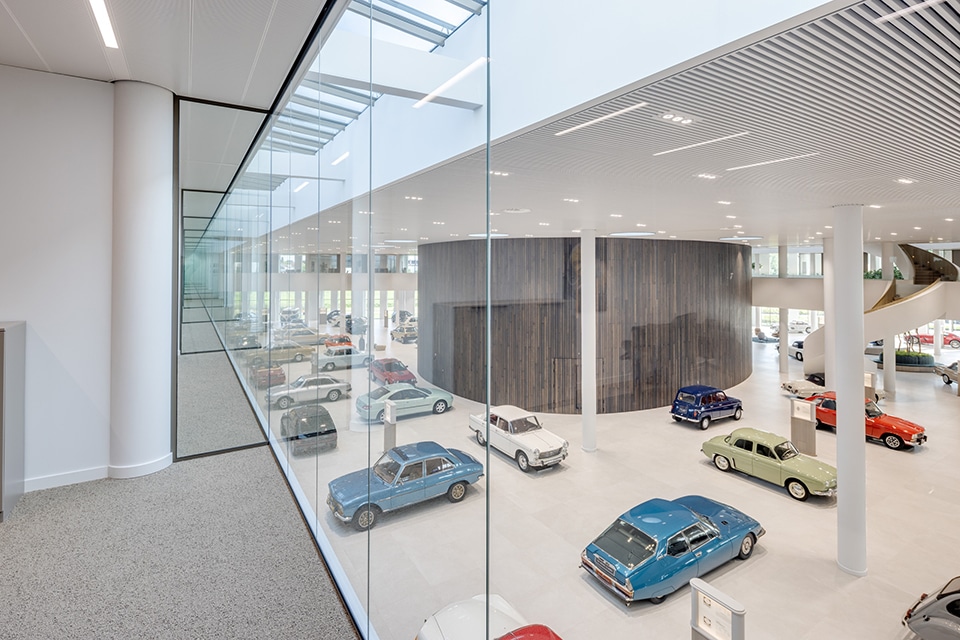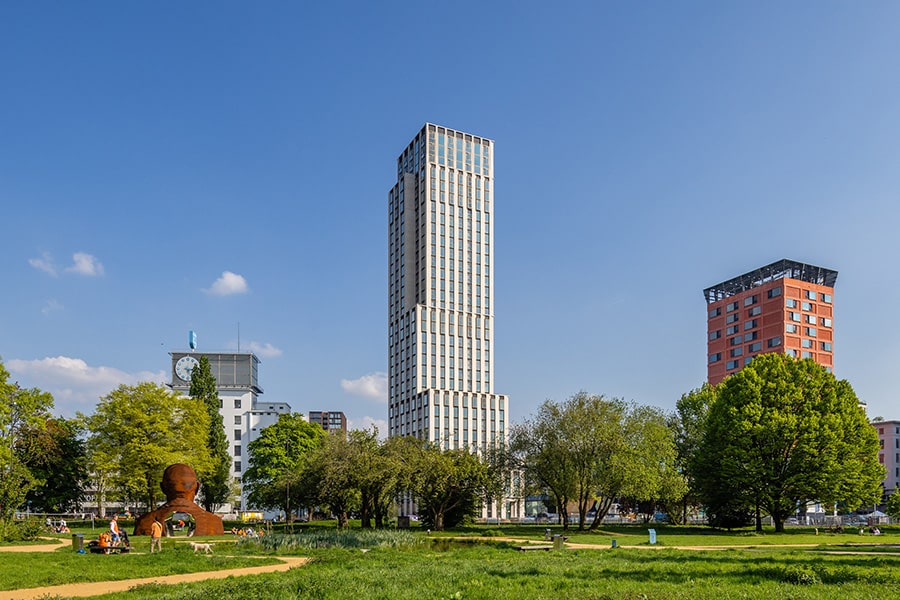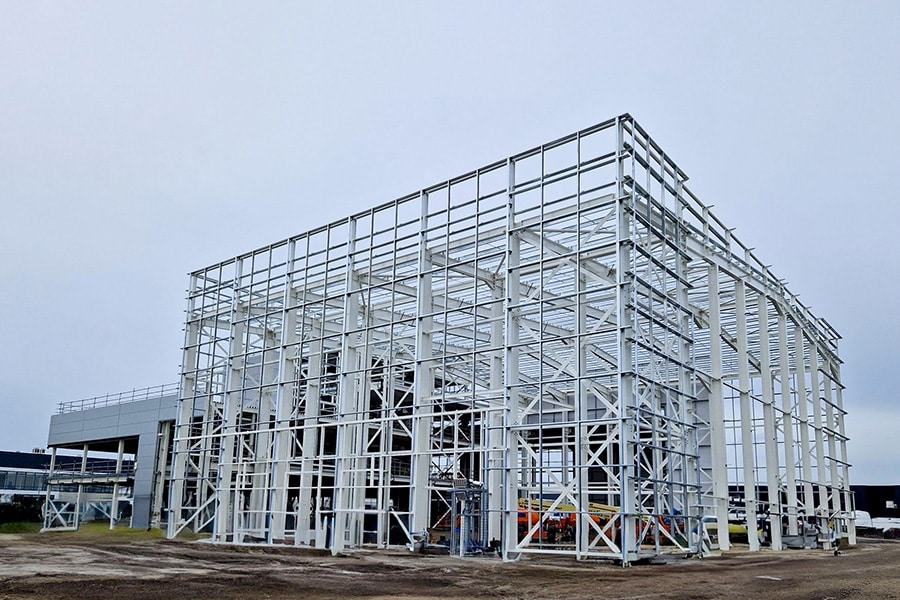
Versatility of glass enables countless applications
Interior Glassolutions B.V. specializes in glass systems for interior applications. "With our full-glass walls and doors we can isolate high noise levels without any problem," explains director Geurt Roelofsen. "Moreover, we offer a variety of solutions in the areas of fire protection, burglary prevention, comfort and hygiene, and our employees don't turn their hand to specials either. The versatility of glass makes countless applications possible. Also in BREEAM and WELL projects." In this article, he explains the most important properties in more detail.
Working in an open-plan office apparently has many advantages: maximum daylight flows in, employees can easily and quickly make contact with colleagues and square meters are optimally utilized. Yet there is also a downside, Roelofsen knows. "In an open-plan office there is often (too) much noise. Research shows, for example, that two-thirds (!) of employees in an open-plan office are distracted by ambient noise several times a day. This is why more and more people are opting for concentration workstations with glass walls and doors. Our glass systems match this perfectly. Thanks to our all-glass walls and doors, daylight, optimal sightlines and mutual interaction are maintained at all times, while noise pollution is no longer an issue. This is how we contribute to a comfortable, safe and healthy (WELL) working environment."

Sound insulation of 38 dB
Very interesting in this context is the slender and slim frame door with double sealing, which enables sound insulation (Rw value) of up to 38 dB. "Only one type of glass is possible in most frame doors," says Roelofsen. "In many cases this is 'simple' glass of 6.76 mm (33.2), which ensures optimal daylight penetration and sightlines. For acoustic insulation, however, this thickness is not sufficient. Our latest frame door provides an effective and aesthetically pleasing solution for this." Multiple glass thicknesses can be included in the SYSTEMS SILENCE DOOR KD1738, from 6.76 mm (33.2) to 16.76 mm (88.2), he says. "In the latter case, sound insulation of 38 dB is guaranteed. A unique performance for frame doors with single glazing, which was also demonstrated last summer in Peutz's independent acoustic laboratory."
Flush doors with sound insulation up to 50 dB
Also unique are Interior Glassolutions B.V.'s all-glass flush doors, which demonstrably enable sound insulations of 43, 46 and 50 dB, as evidenced again by several sound tests at Peutz. "The SYSTEMS SILENCE DOOR PC5000F flush doors of 50 dB were initially developed for the new Booking.com building in Amsterdam, where they are combined with 56 and 60 dB glass walls," says Roelofsen. "This puts us at the maximum of what is currently technically feasible. And we are enormously proud of that!"
Great decorative freedom
Both flush doors and frame doors can be combined with electric locks, ensuring secure access. "And also decoratively, architects and end users can do anything with them," Roelofsen said. "Because the glazing is safely enclosed, numerous types of glass are possible. Moreover, color can be freely played with. The frames can be supplied in any color."

Sustainable raw material
The application of glass is very sustainable because most types of glass are recyclable. WITHOUT loss of raw material, Roelofsen knows. "This saves on the raw material sand, which is becoming increasingly valuable due to intensive use in the construction industry."
Fire penetration and fire spread
The Building Code has specific requirements for resistance to fire penetration and flashover (WBDBO). "In addition, fire-resistant glass had to meet certain resistance classes, such as E, EW or EI. Resistance class E was replaced in July 2021 the European Sa (cold smoke, tested at a temperature of 20°C) and S200 (hot smoke, tested at a temperature of 200°C). An important development because it is not the fire itself, but additional smoke development that is the number one cause of injury and death in a fire. Meanwhile, all our glass systems have been successfully tested in accordance with the European Sa and S200 classifications. This demonstrates that we meet the latest requirements for smoke spread and fire and escape safety."
Safe escape route
Fire-resistant glass is tempered glass with a metal coating and/or colorless and fire-resistant interlayer, Roelofsen says. "Most popular in this area is our gel-coated safety glass. If an unexpected fire breaks out, the fire side of this glass will break. At that moment, the fire-resistant gel coating of the glass wall or door comes into contact with oxygen and will automatically foam up. As a result, heat radiation and/or temperature are overcome, creating a temporary barrier and safe escape route."
Unobstructed view
In addition, to provide sufficient resistance to smoke passage, specific requirements are placed on the frame construction and installation materials. "Any gaps must be perfectly sealed so that (dense) smoke does not obstruct the view of fleeing employees and visitors," Roelofsen said. "Recent tests have shown that the gap seals we use for our soundproof glass systems also meet the Sa and S200 requirements perfectly. With this, our customers catch several birds with one stone. In our products, (fire) safety and (noise) comfort go perfectly hand in hand. Not for nothing do our products find eager demand among architects and end users."




